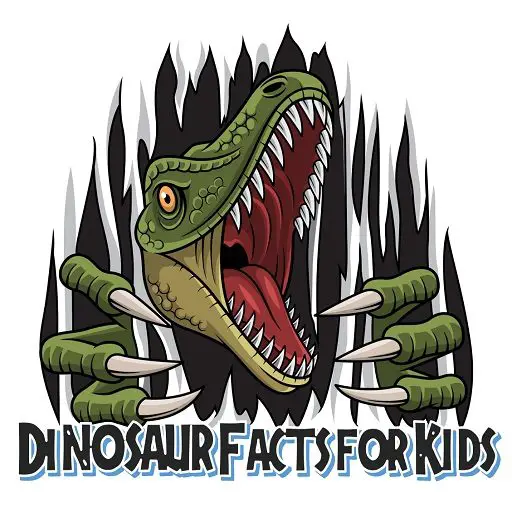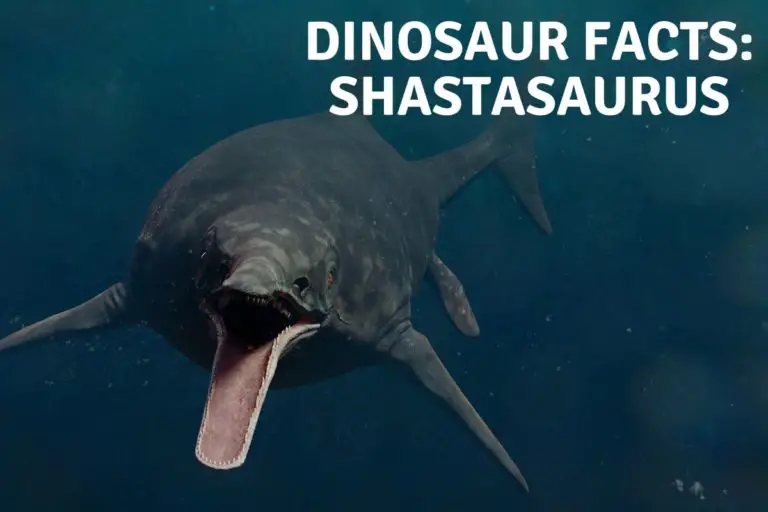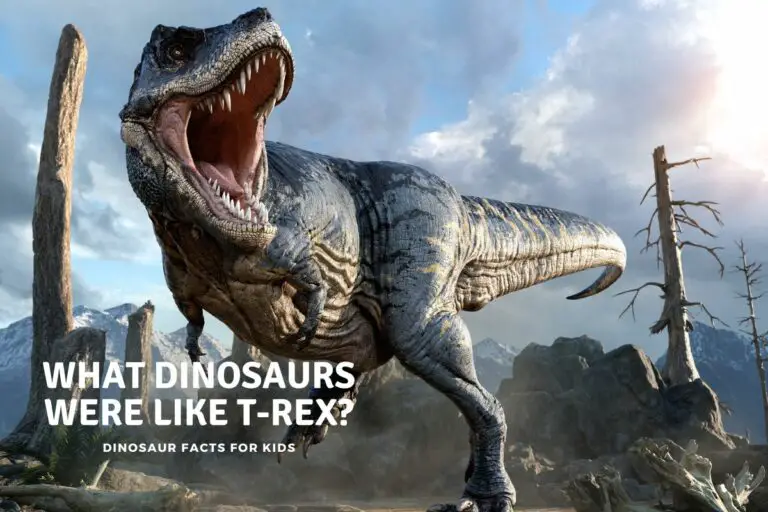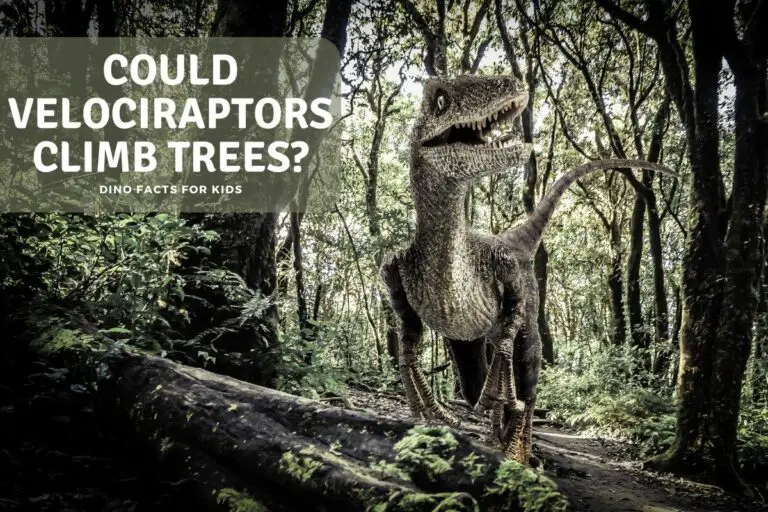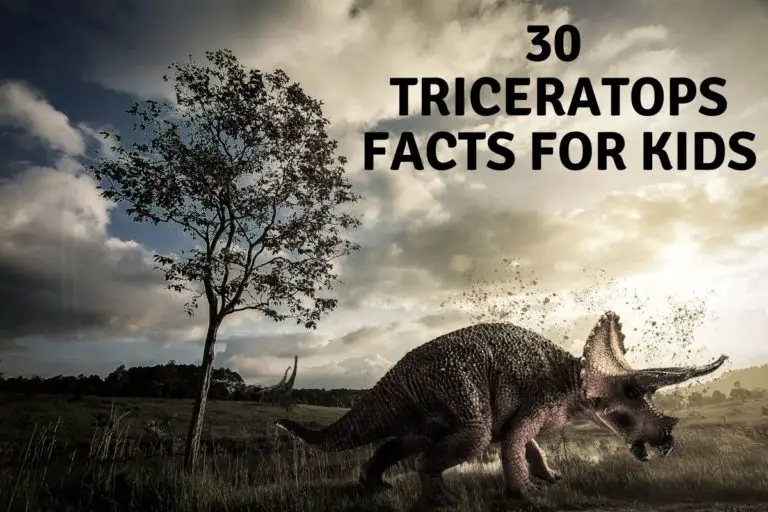How Much Did The Stegosaurus Eat?
Although there are over 1000 species of dinosaurs discovered so far, some stand out from the crowd. One of these is the Stegosaurus with its distinct row of kite-shaped plates along its back, menacing spikes on its tail and its huge size. To grow to that size a stegosaurus would need to eat a great deal of food, we take a look how much below.
A Stegosaurus consumed vast amounts of low-lying vegetation like ferns and horsetails daily to sustain its large body. It’s estimated that its daily intake was similar to modern-day elephants, which can eat 200-600 pounds of food a day. This constant eating was essential for its survival and energy needs.
We look at more detail into the diet of a Stegosaurus below.
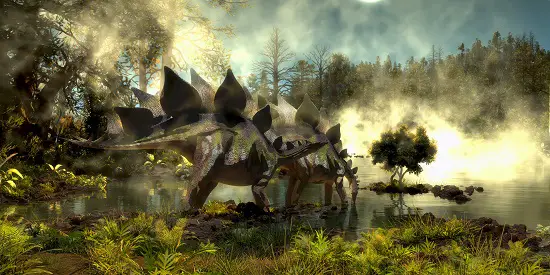
Overview of the Stegosaurus
The Stegosaurus, meaning “roofed lizard,” lived approximately 150 million years ago during the Late Jurassic period. Spanning up to 30 feet in length and weighing around 5 tons.
Its most recognizable features are undoubtedly the two rows of large, flat plates on its back, starting small near the neck, peaking in size around the mid-back, and then reducing towards the tail.
These were accompanied by four long, sharp spikes, known as the “thagomizer,” at the end of its tail.
While its defensive tools are well understood, the exact purpose of the Stegosaurus’ plates – whether for temperature regulation, mating displays, defense or a mixture of them all – is still debated among paleontologists.
How Much Did the Stegosaurus Eat?
While knowing the exact dietary intake of an extinct dinosaur like the Stegosaurus is a challenging task for paleontologists but, through comparisons with modern herbivores and analysis of the Stegosaurus’s physical features, it is possible to make some reasonable estimates.
The Stegosaurus was a herbivore, weighing at around 5 tons, with a large gut capacity suitable for digesting fibrous plant matter.
Its diet primarily comprised ferns, mosses, horsetails, and cycads, which, while abundant in the Late Jurassic period 150 million or so years ago, were not as nutritional as some modern-day vegetation.
This means the dinosaur would need to consume a considerable amount to get all the necessary nutrients and energy it needed.
By comparing the Stegosaurus to present-day herbivores like elephants or rhinos, which consume between 200-600 pounds of vegetation daily, it’s probable that the Stegosaurus had a similar, if not greater, daily intake given its size and the type of vegetation available.
Its feeding habits likely involved continuous grazing throughout the day, much like modern large herbivores.
Comparison Table: Stegosaurus Daily Food Intake vs. Modern Equivalents
| Item | Equivalent Quantity |
|---|---|
| Elephant’s daily intake | 200-600 pounds of food |
| Hay bale | ~60 pounds |
| Lettuce heads | ~2,000 heads |
| Watermelon | ~500-600 watermelons |
| Average-sized Pumpkin | ~400-500 pumpkins |
| Large bags of spinach | ~1,000 bags |
Notes:
- The hay comparison is the most direct, as hay is primarily dried plants.
- The number of heads of lettuce is an approximation to visualize the sheer volume of greens they consumed.
- Watermelons, being a mix of water and fibrous content, can be seen as an amusing, albeit rough, measure of the Stegosaurus’ daily food volume.
*it’s important to remember that the actual plant varieties Stegosaurus consumed had different nutritional values than today’s plants meaning it might have to actually eat more!
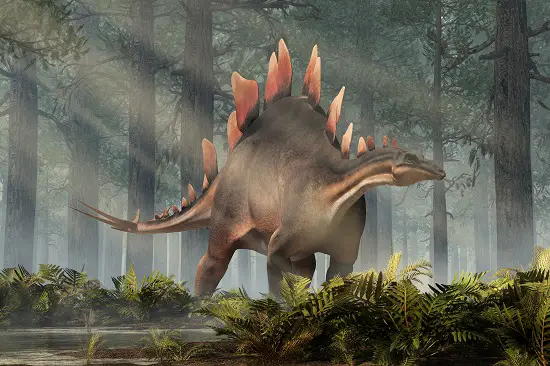
What Did the Stegosaurus Eat?
The Stegosaurus, despite its imposing weaponry, was a herbivore, strictly consuming plant material.
Evidence from fossilized remains and the environment they lived in suggests a diet that mostly consisted of ferns, mosses, horsetails, and cycads.
With its low-slung head and relatively short neck, Stegosaurus likely fed on plants that were closer to the ground rather than reaching for tree foliage.
Gymnosperms, like conifers and ginkgoes, were also available during the Late Jurassic period, though the Stegosaurus’ mouth and teeth structure might have limited its ability to process these tougher plants efficiently.
The absence of grinding teeth, similar to those of advanced herbivores, suggests that the Stegosaurus had to rely on softer vegetation.
Its beak-like mouth was ideal for snipping off plants, while the peg-like teeth helped in basic processing, making ferns and horsetails its most likely primary food sources.
Why Did the Stegosaurus Eat So Much?
The massive size of the Stegosaurus dictated its substantial daily food intake. Maintaining a body weight of around 5 tons required consistent and plentiful nourishment.
Herbivores, in general, need to consume larger quantities of food than carnivores to meet their energy requirements, as plant material offers fewer calories than meat.
Also the plants eaten by Stegosaurus, like ferns and horsetails, were less nutritional compared to modern-day plants. To extract sufficient energy and nutrients, it had to eat vast amounts of this vegetation.
Additionally, the Stegosaurus’ large gut capacity, presumably adapted for fermentation, indicates prolonged digestion times.
This slow digestion process enabled them to extract the maximum nutrients from the fibrous plants but also meant a continuous need for fresh food and we presume, as a pleasant thought, a lot of wind!
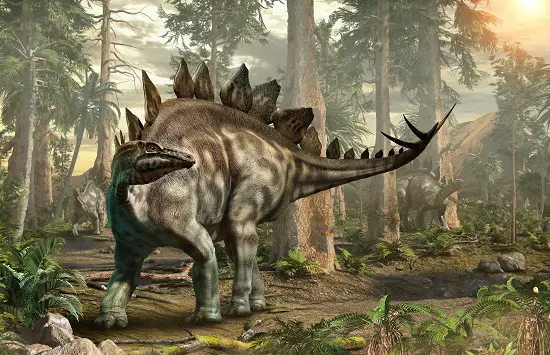
Stegosaurus’ Role in the Ecosystem
The Stegosaurus, being one of the main herbivores of its time, played an important role in the Late Jurassic ecosystem.
By eating vast amounts of vegetation, it helped control plant overgrowth, ensuring a balance between flora and fauna. Its feeding habits could have influenced plant evolution, helping those species that could withstand or evade the Stegosaurus’ grazing.
Also a primary consumer, the Stegosaurus served as a significant food source for larger predators of the era, and not just for its main predator like Allosaurus.
Beyond its role in the food chain, the Stegosaurus’ droppings would have contributed to soil enrichment, recycling essential nutrients back into the environment, and certainly large enough for you to avoid stepping on them !
Comparison with Modern Day Animals
When comapring the Stegosaurus with animals alive today , there are definite similarities.
In terms of feeding habits, the Stegosaurus shares similarities with modern-day grazers like cows or rhinos. Much like how these animals consume large amounts of grass daily, the Stegosaurus feasted on vast quantities of low-lying vegetation.
The sheer volume of its intake is also comparable to, and would likely exceed today’s large herbivores such as elephants, which consume hundreds of pounds of vegetation daily.
However, in terms of body design and defenses, the Stegosaurus stands apart. The unique double row of large, bony plates along its back and the four sharp spikes on its tail (thagomizers) have no modern equivalent in terms of size, although animals like porcupines and hedgehogs also use spikes as a deterrent to predators.
While they might have been used for thermoregulation or display, these features also served as formidable deterrents to predators.
Want to know how much other dinosaurs ate – we many eating habits of dinosaurs covered below.
- How much did a Triceratops eat?
- how much did a T-rex eat?
- How much did a Brachiosaurus eat?
- how much did Velociraptor eat?
- How much did Spinosaurus Eat?
- How much did Stegosaurus eat?
Conclusion
The Stegosaurus, with its iconic plates and spikes, had its food needs met by eating vast amounts of low-lying vegetation.
It’s estimated that its daily intake was similar to modern-day elephants, which can eat 200-600 pounds of food a day and possibly even greater amounts due to the less nutritional plants that lived at the same time.
With so much food needed to survive it would have been grazing for a lot of its time, and that spiked tail would have kept plenty of predators away while it did so.
References
- https://www.twinkl.com/teaching-wiki/stegosaurus#:~:
- https://www.quora.com/What-does-a-Stegosaurus-eat
- https://www.kids-dinosaurs.com/stegosaurus-diet.html
- https://mightyadventures.com/blog/did-you-know/everything-you-need-to-know-about-stegosaurus/
- https://www.smithsonianmag.com/science-nature/stegosaurus-week-the-weak-bite-of-stegosaurus-81190502/
Hi, I am Roy Ford a General Studies and English Teacher who has taught all over the world. What started as a fossil collection became a great way to teach, motivate and inspire students of all ages and all over the world about dinosaurs and from that and children’s love of dinosaurs came the site dinosaur facts for kids, a resource for all ages.
